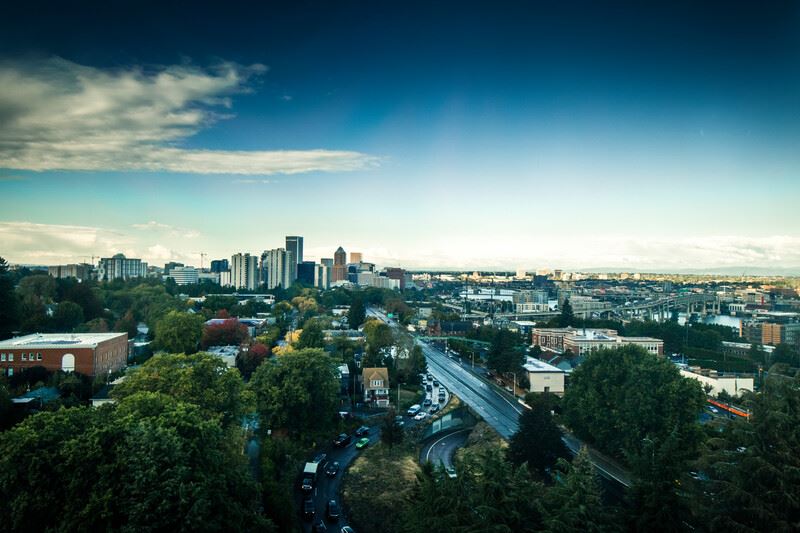By 2050, an estimated 70% of the global population will be living in urban areas, a substantial increase from the current figure of around 55%. Soaring populations will continue to put extra pressure on city infrastructures. Action is needed now if we hope to maintain our quality of life — and many urban centers are already leading the way with safe city thinking and video technology.
Safe cities are connected, data-driven smart cities, where connected internet of things (IoT) systems are used to manage the services and conditions that contribute to residents’ quality of life. There is a broad spectrum of benefits that safe cities make possible: from greater public safety to smoother transportation, to more reliable public utilities.
Safe cities such as Hong Kong, Copenhagen, Singapore and New York are charting a path for the future.
The key to a safe city is connectivity. While video technology has long been a staple in urban centers, it has generally been mostly tied to surveillance and employed only locally. A safe city is where all the video technology systems are connected and centralized. This enables the free flow of information and actionable data.
Diverse urban entities such as civic authorities and utilities, law enforcement, emergency medical services and city planners all stand to benefit from this. Not only in daily operations and emergency cases, but in long-term development as well.
McKinsey Global Institute’s report, Smart Cities: Digital Solutions for a More Livable Future, states that using connected technologies to maximum effect has the potential to reduce fatalities from homicide, fires, and road accidents by 8 to 10%. It also suggests that incidents of assault, burglary, auto theft, and robbery could be lowered by 30 to 40%.
Here is just a sample of what can be achieved with a connected safe city approach:
- More efficient traffic flow: Traffic data is analyzed to identify opportunities to improve local mobility and safety. In the case of incidents, technology such as automated digital signage can divert traffic from accident sites and bottlenecks and clear the way for emergency vehicles.
- Crime prevention in real time, or even ahead of time: Video systems with AI can detect unusual or aggressive behavior and get law enforcement quickly on the scene. They can even do the same when detecting sounds like shouts and gunshots. An even greater benefit is predictive policing: by analyzing movements and trends law enforcement can identify crime hotspots and increase patrols and other deterrents.
- Crowd management: Overcrowding is a frequent concern in sports events, transport hubs and other busy venues. In these scenarios video monitoring can alert staff to spots where health and safety is becoming an issue; or redirect crowds if necessary. In 2020, several crowd-oriented technologies such as heatmapping and person/object tracking found an all-new use case with the onset of covid-19.
- Environmental monitoring: Air pollution and big cities tend to go hand in hand. But, by identifying hotspots and sources, cities can work towards improvements. As McKinsey’s report states: Beijing reduced airborne pollutants by roughly 20% in less than a year, by tracking sources and then regulating traffic and construction accordingly.
Needless to say, all these video devices and software generate vast volumes of data. And being able to understand it all is what makes the tangible difference. That’s why intelligent control rooms have become the engine of safe cities. These are where smart wall video setups channel the data to the relevant teams and ensure full situational awareness across the city.
Intelligent control rooms are the engines of safe cities.
And while these video insights are invaluable enough for coordinating responses to incidents, it’s by applying it to the bigger picture that cities can really make headway for the wellbeing of their residents.
Just take these examples:
- Since Paris first introduced safe city solutions to improve road safety and traffic management in 2010, traffic fatalities have decreased by 40%.
- Barcelona’s investment in its infrastructure and IoT has saved an estimated $58 million (€49.4 million) on water and created 47,000 new jobs.
- And, to top it off, it’s projected that safe city approaches will generate 20 trillion USD in economic benefits by 2026.
There are a lot of doom and gloom predictions about the future. But the safe cities of today offer us a far more positive glimpse of tomorrow.
These are places where nebulous tech terms such as “big data” and “IoT” are actually offering clear benefits — at least when connected video technology is added to the mix. And, as forward-thinking cities are demonstrating, city-dwellers everywhere will be the beneficiaries.
Then check out this ebook: Let’s Rethink City Living.


